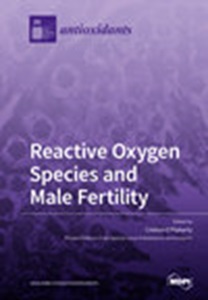Crude Blueberry Phenolic Extracts Improve Gut Barrier Integrity and Exert Anti-Inflammatory and Antimicrobial Activity in an In Vitro Weaning Stress Model
IF 6
2区 医学
Q1 BIOCHEMISTRY & MOLECULAR BIOLOGY
引用次数: 0
Abstract
Piglet weaning is accompanied by gastrointestinal tract (GIT) dysfunction, resulting in post-weaning diarrhea (PWD). The treatment involves antibiotics due to the susceptibility of the weaned GIT to pathogens. However, antibiotic resistance has shifted attitudes toward a nutraceutical approach by enriching feed with functional compounds. Polyphenols are touted for their antimicrobial activity and ability to improve GIT function. Thus, we investigated the protective effects of crude blueberry phenolic extracts (BPE) in vitro using porcine cells challenged with lipopolysaccharide (LPS) as a weaning model. Cells were pretreated with 1 µg/mL and 2.5 µg/mL BPE for 24 h, followed by 10 µg/mL LPS stimulation for 6 h. Antioxidant status, paracellular permeability, the gene expression of proinflammatory cytokines, and tight junction proteins were measured. The antimicrobial activity of the extract was evaluated against porcine pathogens. The pretreatment of cells with 1 µg/mL BPE preserved catalase (CAT) activity. Reduced paracellular permeability was observed in a dose-dependent manner. The BPE preserved the relative mRNA abundance of tight junctions and reduced inflammatory cytokine expression. Pretreatment with the BPE was able to preserve occludin (OCLN) protein levels. The minimum inhibitory concentration of the BPE against Enterotoxigenic E. coli (ETEC) and Salmonella typhimurium (ST) was 62.50 µg/mL. These findings indicate that blueberry polyphenols hold potential as feed additives in swine weaning.粗蓝莓酚类提取物可改善肠道屏障完整性,并在体外断奶应激模型中发挥抗炎和抗菌活性
仔猪断奶后会出现胃肠道(GIT)功能障碍,导致断奶后腹泻(PWD)。由于断奶仔猪的胃肠道易受病原体感染,因此治疗方法包括使用抗生素。然而,抗生素的耐药性已使人们转向营养保健方法,即在饲料中添加功能性化合物。多酚因其抗菌活性和改善胃肠道功能的能力而备受推崇。因此,我们使用受到脂多糖(LPS)挑战的猪细胞作为断奶模型,在体外研究了粗蓝莓酚提取物(BPE)的保护作用。用 1 µg/mL 和 2.5 µg/mL BPE 预处理细胞 24 小时,然后用 10 µg/mL LPS 刺激细胞 6 小时,测量抗氧化剂状态、细胞旁通透性、促炎细胞因子基因表达和紧密连接蛋白。评估了提取物对猪病原体的抗菌活性。用 1 µg/mL BPE 对细胞进行预处理可保持过氧化氢酶(CAT)活性。细胞旁通透性的降低呈剂量依赖性。BPE 保留了紧密连接的相对 mRNA 丰度,并减少了炎性细胞因子的表达。BPE 的预处理能够保护闭塞素 (OCLN) 蛋白水平。BPE 对肠毒性大肠杆菌(ETEC)和鼠伤寒沙门氏菌(ST)的最小抑制浓度为 62.50 µg/mL。这些研究结果表明,蓝莓多酚具有作为猪断奶期饲料添加剂的潜力。
本文章由计算机程序翻译,如有差异,请以英文原文为准。
求助全文
约1分钟内获得全文
求助全文
来源期刊

Antioxidants
Biochemistry, Genetics and Molecular Biology-Physiology
CiteScore
10.60
自引率
11.40%
发文量
2123
审稿时长
16.3 days
期刊介绍:
Antioxidants (ISSN 2076-3921), provides an advanced forum for studies related to the science and technology of antioxidants. It publishes research papers, reviews and communications. Our aim is to encourage scientists to publish their experimental and theoretical results in as much detail as possible. There is no restriction on the length of the papers. The full experimental details must be provided so that the results can be reproduced. Electronic files and software regarding the full details of the calculation or experimental procedure, if unable to be published in a normal way, can be deposited as supplementary electronic material.
文献相关原料
| 公司名称 | 产品信息 | 采购帮参考价格 |
|---|
 求助内容:
求助内容: 应助结果提醒方式:
应助结果提醒方式:


